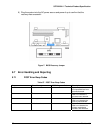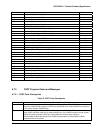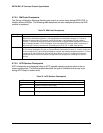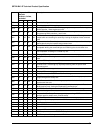
SE7221BK1-E Technical Product Specification
Revision 1.3
64
9.8 Diagnostic LEDs
All port 80 codes are displayed using the Diagnostic LEDs found on the back edge of the
baseboard. The diagnostic LED feature consists of a hardware decoder and four dual color
LEDs. During POST, the LEDs will display all normal POST codes representing the progress of
the BIOS POST. Each code will be represented by a combination of colors from the four LEDs.
The LEDs are capable of displaying three colors: Green, Red, and Amber. The POST codes are
divided into two nibbles, an upper nibble and a lower nibble. Each bit in the upper nibble is
represented by a Red LED and each bit in the lower nibble is represented by a green LED. If
both bits are set in the upper and lower nibbles then both Red and Green LEDs are lit, resulting
in an Amber color. If both bits are clear, then the LED is off.
In the below example, BIOS sends a value of ACh to the Diagnostic LED decoder. The LEDs
are decoded as follows:
Red bits = 1010b = Ah
Green bits = 1100b = Ch
Since the red bits correspond to the upper nibble and the green bits correspond to the lower
nibble, the two are concatenated to be ACh.
Table 75. POST Progress Code LED Example
LEDs Red Green Red Green Red Green Red Green
Ach 1 1 0 1 1 0 0 0
Result Amber Green Red Off
MSB LSB
9.8.1 Diagnostic LED POST Progress Codes
Table 76. Boot Block POST Progress Codes
Diagnostic LED
Decoder
G=Green, R=Red,
A=Amber
Hi Low
Description
10h Off Off Off R
The NMI is disabled. Start Power-on delay. Initialization code checksum
verified.
11h Off Off Off A
Initialize the DMA controller, perform the keyboard controller BAT test, start
memory refresh, and enter 4 GB flat mode.
12h Off Off G R Get start of initialization code and check BIOS header.
13h Off Off G A Memory sizing.
14h Off G Off R
Test base 512K of memory. Return to real mode. Execute any OEM patches
and set up the stack.


















